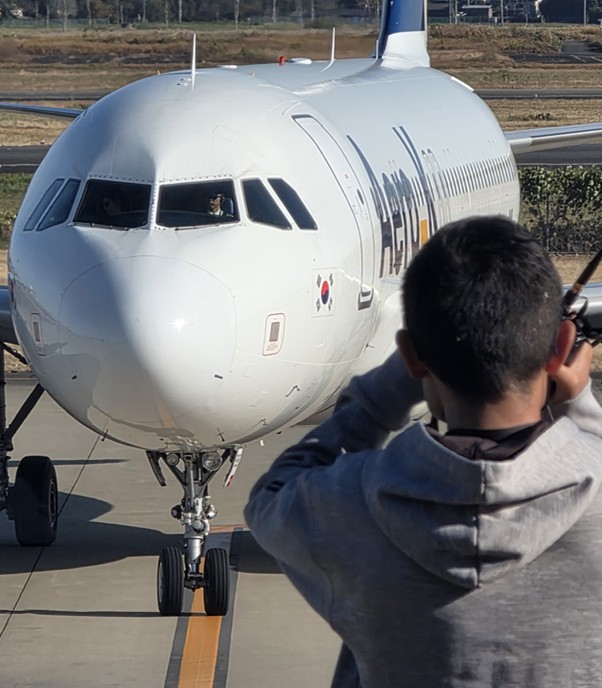

At a Quiet Japanese Airport, a Single Korean Flight Changes Everything (Image courtesy of Yonhap)
SEOUL, Nov. 22 (Korea Bizwire) — South Korean low-cost carriers are quietly reshaping Japan’s regional tourism map, reviving small provincial airports and injecting new life into local economies as the yen’s prolonged weakness draws budget-minded travelers across the sea.
When an Aero K flight from Korea descended into Ibaraki Airport recently, the mood on the ground captured the shift. Plane-spotters gathered on the terrace, radios in hand, calling out the aircraft’s approach.
As the jet touched down, passengers and aviation enthusiasts raised their phones to record the moment; some even waved at the cockpit, close enough to see the pilots’ faces clearly — a rarity in major hubs.
Inside the terminal, immigration formalities took minutes. Ibaraki, a modest facility with the feel of a rural airfield, now relies on a single international route: the flight from Korea.
Yet even that one service has an outsized impact. Nearly 20 passengers boarded the airport bus to Tokyo that day, a reminder of how a lone LCC route can sustain regional transport links and spending.
While Japan National Tourism Organization data shows that inbound tourism has surged back, industry analysts at CAPA note that the recovery is heavily concentrated at major airports in Tokyo, Osaka, and Fukuoka. Many smaller airports are lagging — except where Korean LCCs have stepped in.
Across provincial Japan — from Ibaraki to Tokushima, Kumamoto, and Oita — more than half of newly restored international routes now originate in Korea.
The trend has prompted unusual diplomacy: earlier this month, ten governors and deputy governors from Japan’s national association of prefectures traveled to Korea to plead, quite literally, “Please come to Japan’s small cities.” Tokushima’s governor reported that Korean visitor numbers had grown tenfold from a year earlier.

In Rural Japan, Korean LCCs Become Unlikely Engines of Tourism (Yonhap)
A historically weak yen is powering the boom. With the currency hovering in the low 900- to 1,000-won range, Japan has become one of the region’s most affordable destinations. Smaller cities, with lower prices than Tokyo or Osaka, have emerged as especially attractive “value travel” spots.
LCCs are amplifying that demand. Air Busan, which has spent years building a Korean gateway to Japan’s secondary cities, began operating irregular flights to Oita in 2017 and has since expanded to Kagoshima, Miyazaki, Kumamoto, and Toyama.
Its Busan–Matsuyama route has carried 140,000 passengers over the past two years, with load factors in the mid-80 percent range, enough to support daily service. A new charter route to Nagasaki has already topped 90 percent occupancy, prompting extensions through March.
Destinations such as Matsuyama’s Dogo Onsen and castle, and Nagasaki’s Huis Ten Bosch and hot-spring regions, have become popular with Korean travelers seeking a short-haul escape with classic Japanese charm.
One LCC flight, local officials say, can restart a city’s entire tourism engine — hotels, restaurants, buses, and shops. As a regional reporter from Tochigi Prefecture noted while accompanying visiting governors in Korea, even areas neighboring Ibaraki are “watching its international service with tremendous anticipation.”
For Japan’s provincial airports, the revival may be arriving not on a high-speed train or a government subsidy, but aboard budget jets lifting off from Korea.
M. H. Lee (mhlee@koreabizwire.com)

AloJapan.com